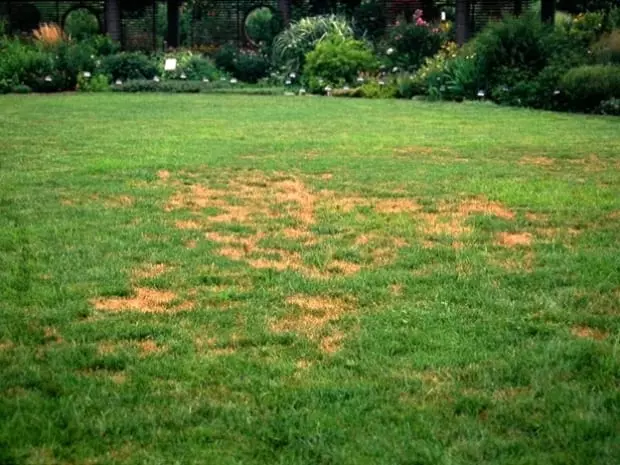As the winter season makes way for spring, your lawn will probably have brown patches of grass. This is a common occurrence, but there is a variety of solutions since the causes are just as numerous. Even if you cannot pinpoint the primary cause of the grass discolouration, the following steps should ease the problem. Below is our guide on how to fix a brown lawn after the cold winter.
Take Note of the Amount of Water
The temperature slowly but surely warms up after winter, so your grass would need more water to thrive. This is a period when they switch from a dormant period to one of active growth. Thus, the transition needs to be as smooth as possible — you cannot water too much or too less. Normally, a lawn would require an inch of water every week.
A temporary increase in the amount is allowed if there’s a sudden increase in the temperature. Likewise, reduce the amount of water if the soil isn’t well-draining. Failure to do so can leave the grass surrounded by water far longer than necessary. Ideally, the grass will become lush and green once again.

Image courtesy of https://www.turfmagazine.com
Get Rid of Thatch
Thatch isn’t necessarily bad for your lawn. However, any layer that is thicker than half an inch isn’t going to help either. A thick layer of thatch can take hold of the water that should have been sent to the root systems of your grass. Thatch that is constantly wet will not only impede the growth of grass but it can also allow various lawn fungi to develop and lead to more brown patches. Simply use a dethatcher to get rid of heavy layers of thatch.
Here is a video of dethatching a lawn:
https://www.youtube.com/watch?v=WGy0hIzsXn8
Weed Control
Another problem is when weeds also begin to spread all around your lawn as winter ends. Weeds make it difficult for your grass to receive sufficient water and nutrients from the soil. In other words, they won’t revive properly and stay brown.
The best solution against weeds is to kill them before they can mature and spread their seeds once again. Weed removal must be conducted before you irrigate and apply fertiliser to your lawn. Doing it afterwards will only encourage the weeds to proliferate. You can pull the weeds by hand as long as you include their roots, but you can also use any appropriate herbicide.
Conduct a Soil Test
The application of fertilizer is only helpful for fixing brown grass if you know what nutrients your lawn lacks. The soil pH in your lawn must be above 6.0. Moreover, brown grass needs nitrogen to help it grow and become healthy once again. You can get a soil test kit and check the pH on your own or send a soil sample to a laboratory to get more comprehensive recommendations.
Complete Removal and Growing New Grass
A lawn that has a significant amount of brown grass can be immediately replaced if you have the resources. Shovels are cheap enough but they require a lot of physical labour. Sod cutter makes removing the brown grass easier, but they tend to be pricey.
Once the old grass is removed, you can sow new grass seeds or get a lot of sod. While this will quickly get rid of brown grass, do note that this might not be the most practical solution in your case. Before considering this solution, try the other methods.
Overall, it is indeed possible to fix your lawn if it suffers from brown patches after winter. You can get green grass once again even if you cannot identify the number one cause. As you’ve read, what matters is that you take good care of your lawn in the form of weed control, irrigation, fertilizer application, and dethatching. If nothing else works, you can always grow new grass or lay sod.
If you have any queries, do send us a comment.
Editor: I hope you enjoyed this guest article written by Ann Sanders and I strongly encourage you to visit and follow her Website A Green Hand.













